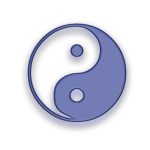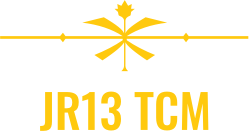
There is no progress without change.
Standing between a clinician and a thriving practice is often a mediocre brand of herbal products with a sensational marketing campaign – and the clinician’s failure to invest a little effort for an enormous clinical advantage.
“THE HERB SPEAKS FOR ITSELF”
High potency herbal products will get good results; the highest potency herbal product will get the best results. To find the highest potency herbal product, a clinician must know how to look for it. The fact is, the TCM marketplace is plagued by over-hyped, industrially processed, herbal extract concentrates of little or no clinical value. A TCM clinician can easily guess wrong and choose a product line that is weak, out of balance, and incapable, leading to years of mediocre practice and frustration. Fortunately, an herb communicates its capabilities via its vital signs. By comparing one brand’s vital signs to another brand’s vital signs, a clinician will be directed to the most effective brand – and that could make all the difference.
VITAL SIGNS:
A person’s vital signs are the evidence of the current physical functioning of the body.
An herbal product’s vital signs are the evidence of the current capability of the product.
- If the herbal product’s vital signs are strong, expect a strong effect.
- If the herbal product’s vital signs are weak, expect a weak effect.
- Use the method below to find the stronger brands.

IF THE VITAL SIGNS ARE WEAK, NOTHING ELSE ABOUT THE PRODUCT MATTERS
You don’t need to know the taste of each individual herb, or each group of herbs in a formula in order to test. For the experienced, testing is easy; for the novice, your culinary intuition will guide you.
VITAL SIGN 1: A potent herbal extract concentrate should have a strong taste . . .
The intensity of an herbal product’s flavor is a palpable measure of its potency. This makes it exceedingly easy to compare two brands (see below). An “extract concentrate” should be really strong. So, with very few exceptions: if it doesn’t taste like much, it won’t do much. Note that the bitter or sweet tastes of certain herbs may survive factory processing damage, but in a formula, they are likely accompanied by ruined and rancid co-players that did not. Rancidity too displays its own flavor: a nasty sour or bitter taste. Taste-test as described below; you’ll find the stronger brand and better clinical results will follow.
VITAL SIGN 2: A potent herbal extract concentrate should have a rich color . . .
Let’s not be led to assume that a product is potent just because the herb specimen pictured in the seller’s ad looks potent. A raw material and a finished product are worlds apart, and we clinicians need to test the latter. When comparing two herbal extract brands, the one with a richer color hints at more potency. It’s just one sign. If one product has a richer color but without a stronger taste, something’s not right.
VITAL SIGN 3: A potent herbal extract concentrate should have a distinct fragrance . .
Fragrance is medicine. With aromatic/fragrant herbs, the therapeutic response is rapid and significant. If you can’t smell fragrance in the bottle claiming to include “concentrated” fragrant herbs, that’s a red flag: The herbs may have been potent at harvest, but the state of the herbs at the time of administration is what matters. Industrial processing, especially “spray drying,” will absolutely ruin a fragrant herb.
VITAL SIGN 4: A potent herbal extract concentrate should have oils you can feel . . .
A product, listing a substantial % of seeds (tao ren, xing ren, etc.) and/or rich-natured herbs like tonics, should have an easily perceptible oily, viscus feel. To verify, simply rub the wet extract (tincture for example) between two fingers. If you can’t feel oil, the oil and its therapeutic value is absent. When testing a moistened dry product (pill/powder/granule), if you do feel oil , it’s logical to assume that some rancidity is present unless there were preservatives added to protect those oils.
HOW TO TEST FOR EASILY OBSERVABLE POTENCY LEVELS
Anyone can do this; you don’t have to know the taste of any individual herb in order to test. You are searching primarily for the intensity of the taste.
1) Choose a single herb or a formula. Start with one dose of each brand to be tested. Simply let powders/granules or pills dissolve in a tablespoon of water. For a liquid product, place one dose and enough water to fill the tablespoonful.
2) Now you can do a taste comparison of each tablespoonful… You’ll discover that some brands have the strong taste of high potency and some brands have the weak taste of low potency.
On a capability rating scale, most brands are scattered broadly in between highly capable and entirely incapable. How does the brand you use rate? You’ll find that a brand’s popularity does not necessarily mean a high potency product; in fact, sometimes, quite the opposite.
The brand with the stronger taste is probably the more potent medicine and the one more likely to achieve the results you want. While Brand popularity and intensive marketing may capture a clinician’s attention, there is no way to be sure which medicine is best unless we taste-test.
NOTES
- Begin by comparing your current brand against one other brand. Then do another and then another . . .
- Ask for sample concentrates whenever you can – all brands, dry and liquid.
- The more you test, the better your testing abilities become.
- Eventually, just chewing on a tablet will tell you what you need to know.
- Remember, rancidity itself possesses a strong taste.
- Make periodic testing a lifestyle; test and retest often. Why retest? See QUALITY FADE (#7).
- Every encounter is an opportunity for education leading to better clinical outcomes.
- Take charge; manufacturers will respect you (or fear you).
- It’s ok to say, “Persuasive ad, but nope, still tastes bland and powerless; keep trying!”
- Compare to find the products with stronger vital signs and then . . .
- Use new-found, stronger products to invigorate your practice.
- Try not to lament years using a product with an exaggerated opinion of itself.
As clinicians, we are attracted to product labels that
we recognize, perhaps mistaking familiarity for quality.
We feel safe, but our comfort zone can put our needs last.
Attraction to the familiar keeps us stuck.
